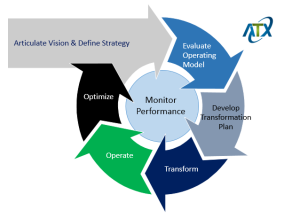
While Spring often brings thoughts of renewal, most companies consider Fall the time to plant new ideas.
As the leaves begin to change in new England, many of our clients dust off their strategic plans and consider goals and targets for the new year.
Annual plans and budgets work best when aligned with long term strategic plans. The annual planning cycle then provides an opportunity to plan and realign priorities, initiate new initiatives, monitor the performance of the business, and then reap the rewards of your efforts.


In order for long term planning to be successful, you must align resources and spending priorities based on your vision of the future. We recently completed our annual strategic planning session and wanted to share six important tips to help develop strong working strategies:
Many companies take a haphazard approach to long-term planning with no formal framework in place. Strategic direction then gets set based on a request to create budgets for the next fiscal year.
Then they “back into” a desperate plan to fit their resources, projects and activities to accommodate the budget they have established.
This causes problems. If the budget gets set by an arbitrary deadline, it forces people to complete an activity before it’s ready.
Long-term planning cannot be confined to an annual deadline. The danger for a company comes when long-term planning gets put off to some future date resulting in misaligned priorities and lost opportunities.
When working on long-term goals, avoid the challenge of day-to-day activities. Focus on what you want the company to achieve, then align short-term steps with the long-term vision.
If you take the time and expense to hold a meeting offsite to discuss long-term goals – which we highly recommend – don’t cloud the agenda with tactical discussions and current projects. While important, use a regular staff meeting to handle them.
Strengths-Weaknesses-Opportunities-Threats Analysis:
The time-tested approach to evaluate the “SWOT” of the company can produce important results and measure your progress.
Value Analyzer:
Review core values of the company and hold yourselves accountable to whether or not you are demonstrating these values and holding your people accountable to demonstrating these values.
Give yourself a Scorecard:
Rate yourself on performance compared to established goals. Allow time to debate this as one person’s view of success may be a failure in the eyes of others and it is good to get.
Ask yourself if you have veered away from important objectives. If you find you need work on any of these points, consider an offsite meeting to work on strategic planning and other company goals.
Take a trip down memory lane:
Revisit the past to validate your future.
Examine what you have done well over the year or since you last updated your strategic plan.
How has the company evolved and why?
What lessons have you learned?
Note: This review works as a great technique for new members of the leadership team to understand more of the company’s history.
When setting growth objectives, develop reasonable target metrics that you want to achieve that can easily be measured and monitored.
Identify headcount, revenue, geographic targets, deadlines for new services, etc. Success is difficult to measure if you do not establish a baseline by which to monitor your progress.
Revisit these targets periodically to be sure they are realistic and be reasonable to allow time to implement your objectives.
Ask managers what they would do if they had an extra $10k, $100K, $1MM and why. This will encourage managers to think beyond the justification for individual line items. It would also help determine how the additional expenditures would drive value to the organization.
We recently incorporated a management team visit to the Escape Room as a team building activity and break from our intense work sessions. We didn’t solve any of our business problems that night but we learned to work together a bit more as a team and didn’t burn out from two days of intense meetings. Hats added to the festivities. (pictured above in this article)
Long-term planning always works best when you have a strategic roadmap established and is periodically reviewed and refreshed.
At ATX we practice the following approach internally, as well as with our clients to determine strategic plans.
Contact ATX to let us help you harvest the most success with your strategic planning initiative.